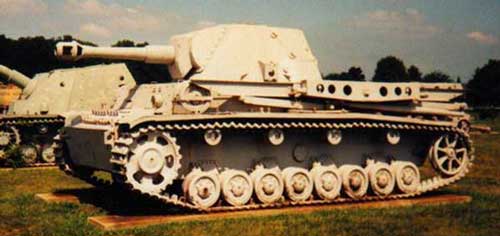|
|
|
GRASSHOPPER
GRASSHOPPER

|
I haven't come across much information about this tank other than what could be gathered from the picture and a documentary on German armour that was filmed in part at Aberdeen Proving Grounds, Maryland, where this vehicle is on display. Without quoting, the purpose of this was explained as follows;
German engineers would dig a hole. Note in the picture above some of the equipment resting on the track guard used in performing this job.
How many turrets were placed in the ground and where, I haven't heard any number or location.
This panzer was designed on the versatile and proven Pz Kpfw IV chassis. |
|
|
|
German prisoners who were lucky enough to end up in America enjoyed many luxuries. A typical recreation room at POW camps came complete with several ping-pong tables, a dozen chess boards, packs of cards, bingo sets, and a phonograph. At Camp Campbell Kentucky they had an incredible collection of 50 records ranging from "Home on the Range," "Missouri Waltz." "Can't Get Indiana Off My Mind," to name just a few. But the most popular record at Camp Campbell and most other camps was Bing Crosby's “Don't Fence Me In!” |
| HOME | BACK |